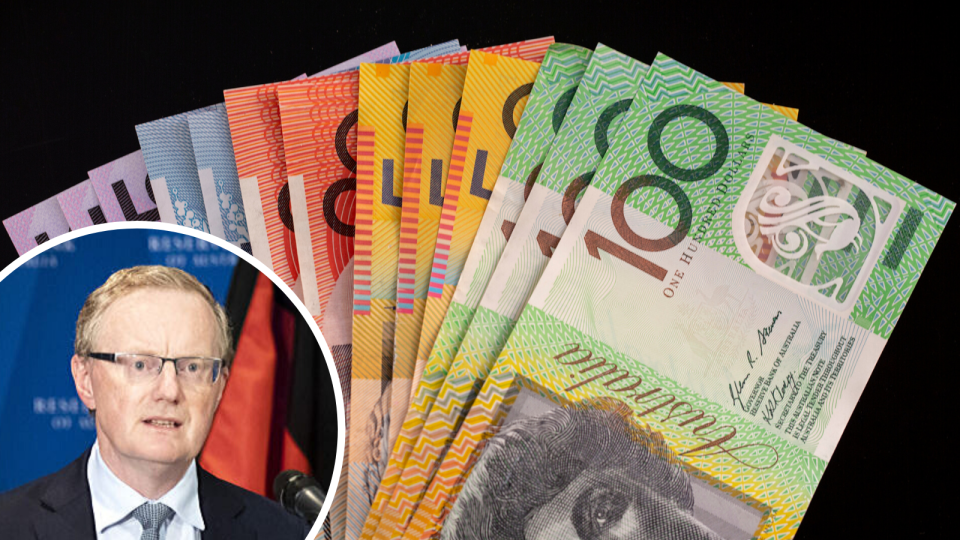Reserve Bank launches quantitative easing: What is it?

The Reserve Bank yesterday made an out-of-cycle cut to the national interest rate in order to stem the economic downturn Australia is careening towards.
But with the cash rate now at 0.25 per cent, monetary policy – the strategy of adjusting national interest rate to control the supply of money in the country, which affects credit, your savings rate as well as the cost of borrowing for businesses and exports – has little room to move left.
As a result, RBA governor Philip Lowe also announced on Thursday that the central bank “stands ready” to boost the economy through a form of quantitative easing (QE).
Also read: RBA throws kitchen sink at coronavirus
Also read: EMERGENCY RELIEF: Has your bank passed the rate cut on?
Also read: The Aussie jobs booming while hiring slows down everywhere else
“I understand why many people will view this as quantitative easing – or QE,” he said in a speech yesterday.
“But our emphasis is not on the quantities – we are not setting objectives for the quantity and timing of bonds that we will buy ... Rather than quantities or the size of our balance sheet, our focus is very much on the price of money and credit. Our objective here is to provide support for low funding costs across the entire economy.
“By lowering this important benchmark interest rate, we will add to the downward pressure on borrowing costs for financial institutions, households and businesses. We are prepared to transact in whatever quantities are necessary to achieve this objective.”
What is quantitative easing?
In short, QE is a form of unconventional monetary policy where central banks buy government bonds to encourage investment and spending.
Government bonds are considered a very safe asset where investors lend money to governments for a set amount of time and are paid back at predetermined interest rates (which is called the bond yield).
Major companies that borrow huge sums of money from capital markets – where buyers and sellers trade financial securities like bonds and stocks – often borrow at a rate slightly higher than these interest rates.
But they don’t borrow from the government directly. These big companies go through an intermediary, a fund manager, who decides to lend the money at the yield rate, plus a little bit extra (based on the risk of lending it to the company) so the fund manager can make money.
Currently, the interest rate on a 10-year government bond is 2.5 per cent.
However, these interest rates go up during rough times, because companies are at greater risk of going bankrupt and therefore unable to pay back money owed.
But, through quantitative easing (QE), the RBA purchases these government bonds on the capital market. Demand for these bonds are therefore driven up, which in turn lowers the interest rate.
With interest rates lower, there’s greater incentive for fund managers to lend and for businesses to borrow. This money gets spent and invested, which helps keep people in jobs and boosts the economy.
QE explained with cornflakes
If this is a little confusing, here’s a breakdown using cornflakes, courtesy of independent economist Stephen Koukoulas.
Let’s say you buy a box of cornflakes at a supermarket and it costs you $2. The supermarket buys it from the wholesaler at $1, so the supermarket makes $1 profit.
But if the wholesaler sells it for $2, the supermarket will be forced to sell it to shoppers at a higher price, say $3, in order to make a profit.
With QE, the central bank swoops in and prints so many boxes of cornflakes that the market is flooded and the wholesaler can drop the price of cornflakes to, say, $0.50.
That means the retailer, selling it for $2, now makes $1.50 profit.
However, the idea with QE is that the retailer is so happy with the profit they’re making that they’re willing to drop the retail price down to $1.50.
This way, consumers pay less, meaning they’re still buying cornflakes – where they otherwise might not have, because the price was too high – everyone eats, and no one goes hungry.
However, bear in mind that this analogy can only go so far, Koukoulas told Yahoo Finance.
“Printing money is like printing cornflakes out of thin air.”
What have the RBA done, and what does QE mean for me?
On Thursday, the Reserve Bank set a target of 0.25 per cent on 3-year bond yields as well as slashing the national cash rate.
Following the RBA’s announcement, the Commonwealth Bank of Australia reduced the interest rate on one, two and three-year fixed home loan rates for owner-occupiers paying principal and interest by 70 basis points, and also increased 12-month term deposits by 60 basis points to 1.70 per cent per annum.
According to AMP Capital chief economist Shane Oliver, the RBA’s move means good news for mortgage holders.
“Aussies will feel it via lower long-term borrowing costs, say lower fixed mortgage rates – as an example, CBA cut them [Thursday]) – and via a lower Australian dollar, which helps industry and jobs here,” Oliver told Yahoo Finance.
But the economist said the RBA’s measures fall short of other measures it could have also implemented.
“While the three year rate influences much funding in the economy, it would have made sense to also target the 10 year bond yield which has shot up to 1.5% as it plays a big role in Federal Government borrowing which will rise sharply in the months ahead.”
Make your money work with Yahoo Finance’s daily newsletter. Sign up here and stay on top of the latest money, news and tech news.
Follow Yahoo Finance Australia on Facebook, Twitter, Instagram and LinkedIn.

 Yahoo Finance
Yahoo Finance 
